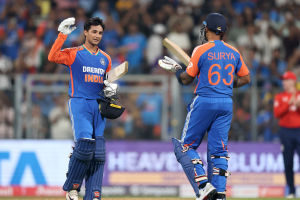
Cricket is a sport with a deep history and a unique set of rules that ensure fairness and consistency. The global standard for cricket rules is set by the Marylebone Cricket Club (MCC), based in London.
Although MCC is no longer the official governing body of the sport, it still holds the copyright for cricket rules and is the only institution authorized to modify them. However, any rule changes usually happen after discussions with the International Cricket Council (ICC), the global authority for the sport.
Cricket rules explained in 2 minutes
video by Global News
Cricket is one of the few sports that refer to their governing principles as "Laws" rather than "Regulations" or "Rules." These laws apply to all formats of the game but can be supplemented or modified for specific competitions.
The Origins and Evolution of Cricket Rules
The origins of cricket are widely debated, but it likely developed from various bat-and-ball games played in medieval England. By the 18th century, cricket became a popular gambling sport, especially among the English nobility. The first known cricket laws were drafted in 1744 by a group of "noblemen and gentlemen" in London. These early laws mainly focused on ensuring fair play in matches where large sums of money were at stake.
In 1788, MCC formally established the first standardized set of cricket laws. These laws gradually evolved over time, incorporating changes such as standardized ball weight, bat width, and wicket height. In 1829, the stumps were increased in height from 24 to 27 inches, and the bails from 7 to 8 inches to give batsmen a fairer chance.
One of the most significant changes came with the introduction of the "Leg Before Wicket" (LBW) rule. Initially, players avoided getting hit by the ball to prevent injuries, as protective pads were not in use. However, once pads became common, batsmen started using their legs to block the ball, leading to the introduction of the LBW rule to maintain the game's integrity.
Standardization and Key Rule Changes
By the late 19th and early 20th centuries, cricket laws continued to develop:
1884: The number of players per team was officially set at 11.
1900: The standard number of balls per over was set to six (though Australia used eight-ball overs until 1979).
1947: A major rewrite of the laws was approved by MCC.
2000: Cricket laws were rewritten in simpler English, and the standard over was officially defined as six balls.
2010: New revisions addressed issues like bad light conditions, coin toss procedures, and the "Spirit of Cricket" to promote sportsmanship.
Current Cricket Rules and Regulations
The current cricket laws cover all aspects of the game and are divided into 42 laws and four appendices. These rules apply to all two-innings matches, while ICC has additional conditions for limited-overs matches, including One Day Internationals (ODIs) and T20s.
Some key points in the modern rules include:
Ball specifications: A cricket ball must weigh between 155.9 to 163 grams and have a circumference of 22.4 to 22.9 cm.
Team composition: Each team consists of 11 players, including a captain. In informal matches, the number of players can be flexible.
Substitutes: If a player is injured, a substitute fielder can replace them, but substitutes cannot bat, bowl, or act as captain.
Umpires and scorers: Two on-field umpires enforce the rules, and two scorers keep track of runs and dismissals.
The Cricket Field and Equipment
The Pitch: The pitch is a 22-yard-long rectangular area where most of the action takes place. It must be properly prepared and maintained.
The Wickets: Each wicket consists of three vertical stumps topped by two small wooden bails. The total height of the wicket is 28 inches.
Bats and Protective Gear: The bat must not exceed 4.25 inches in width and 38 inches in length. Players use protective gear like pads, gloves, and helmets.
How a Cricket Match Works
Cricket matches follow a structured format:
Innings: Each team gets one or two innings to bat and score runs. A team's innings ends when all its batsmen are out or the allotted overs are completed.
Overs: A bowler delivers six legal balls in an over before another bowler takes over.
Dismissals: A batsman can be out in several ways, including being bowled, caught, run out, or given LBW.
Scoring Runs: Runs are scored when batsmen run between the wickets or hit boundaries (four runs for hitting the ball past the boundary line and six runs for clearing it in the air).
Cricket Today: A Balance of Tradition and Innovation
Cricket has evolved from a leisurely pastime for aristocrats to a globally recognized sport with high-intensity competition. While Test cricket remains the longest format, shorter versions like ODIs and T20s have gained massive popularity, offering faster gameplay and thrilling finishes.
Modern technology has also changed the game, with tools like the Decision Review System (DRS), Hawk-Eye ball tracking, and ultra-edge technology assisting umpires in making accurate decisions.
The Timeless Appeal of Cricket
Cricket’s rich history and detailed rules make it one of the most strategic and exciting sports. From its origins in England to its global presence today, cricket continues to captivate fans with its blend of skill, teamwork, and tactics.
So, Lykkers, what’s your favorite cricket moment? Have you ever played the game or watched an unforgettable match? Let’s chat in the comments!


